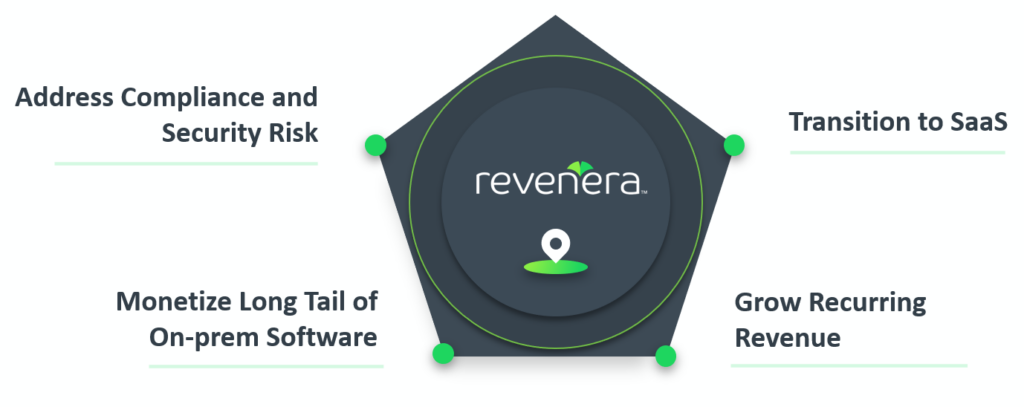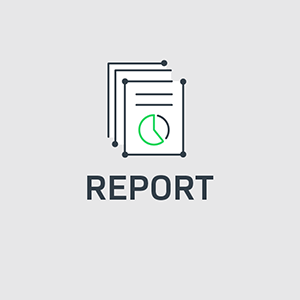As reported in the Monetization Monitor, SaaS licensing models continue to grow at pace, with 61% of producers expecting Software-as-a-Service deployments to increase as a percentage of overall revenue before 2026.

As the technology landscape evolves, new monetization strategies come to the fore, creating opportunities for growth alongside panicked confusion as you consider how the latest trends will impact your business.
This guide provides an overview of the various licensing models for SaaS (many of which can be applied to other deployment methods), helping you navigate the intricacies of each as you debate future roadmaps.
However, before we dive in, it’s important to note that some organizations prefer terms such as ‘SaaS operating models’ or ‘SaaS use rights‘, believing that ‘licensing’ is too closely associated with on-premises agreements that are traditionally perpetual.
SaaS vs Perpetual License Model
Perpetual licensing involves a one-time purchase for lifetime access to specific software versions, whereas SaaS is commonly tied to recurring revenue models, with users receiving continuous updates and support.
Despite the ‘licensing’ language debate, many technology companies actively discuss SaaS licensing models and the phrase is widely accepted, if not universally adopted.
Ultimately, whichever terminology you’re more comfortable with, we’re talking about the same thing: monetizing your SaaS solution.
With that in mind, here’s a quick introduction to everything you need to know.
SaaS Licensing Models 101
Subscription
Subscription-based licensing is highly prevalent in the SaaS world, with customers paying monthly or annual fees. This approach generates recurring revenue for providers, ensuring financial stability, while customers benefit from the affordability of incremental payments.
Freemium
As the name suggests, freemium allows basic usage at no cost, with the option to pay for advanced features or functionality. This approach allows users to try products before committing to a purchase, and encourages viral adoption through word-of-mouth marketing. Common use cases include creative tools and mobile apps. The low barrier to entry can facilitate rapid user acquisition, creating lucrative upsell opportunities for premium features.
Tiered Pricing
In tiered SaaS licensing models, producers offer multiple options – such as Bronze, Silver and Gold – each with different features, functionality, and costs. This framework caters to those with varying requirements, from individuals and small businesses to large enterprises, ensuring flexibility for customers (moving between tiers as needs change), and increased revenue potential for suppliers.
Download the ebook:
The Product Manager’s Guide to SaaS Implementation

Pay-Per-Feature Licensing
A pay-per-feature SaaS licensing agreement allows customers to access specific features or modules. Use cases include accounting software with add-on modules for payroll or inventory management, and project management tools with additional reporting or customization options. Benefits include cost control for customers – ensuring they only pay for the precise capabilities they need – while suppliers can still monitor upsell opportunities.
Enterprise Licensing
An enterprise SaaS license model involves customized agreements to meet the specific requirements of large organizations. These agreements may include volume discounts, custom terms and conditions, and dedicated support. This model caters to the unique needs of large customers, such as tailoring integration services or meeting industry-specific compliance regulations.
Concurrent/Floating User Licensing
Concurrent licensing permits a specified number of users to access the software simultaneously. Instead of licensing based on individual users, customers purchase a set number of concurrent users. This model is suitable for applications where usage peaks at certain times or where resources are shared among users, perhaps in different geographies. Benefits include cost-effectiveness, flexibility in user access, and efficient resource utilization.
Read the white paper:
The CFO’s Ultimate Guide to SaaS
User-Based Licensing
In user-based SaaS licensing models, each user typically has their own login credentials and access rights. This approach is suitable for applications where accounts are tied to individuals or where user roles and permissions vary. This model is beneficial for businesses with differing user needs, as they can scale the number and types of use rights based on requirements. It provides flexibility and cost-efficiency, particularly for organizations with fluctuating user counts or those looking to closely align software costs with actual usage.

Usage-Based Licensing Models for SaaS
Elastic Access
Elastic licensing is a flexible model that often combines subscription and pay-per-use agreements whereby customers commit to a base-level of usage rights but can purchase extra credits (or tokens) that can be exchanged for additional capacity. Producers can set prices for each application, feature, capability, or resource they offer, and immediately make changes available to customers, with real-time usage data to ensure exact charging.
Token Licensing
There are two variations of token-based SaaS licensing models. The first is similar to elastic, allowing customers to purchase tokens upfront, which can be redeemed to access specific features, applications, or usage allowances. The second definition is essentially floating licensing, with a set number of tokens that can be checked in and out to provide access for various concurrent users.
Metered
Unlike fixed-fee models, software metering allows businesses to pay for what they use, and charges can be applied in various ways, such as an hourly rate or the number of times a feature is used. This form of SaaS licensing agreement is advantageous for organizations with fluctuating usage patterns, as they can control costs and avoid overpaying for unused capacity.

Consumption-Based Licensing
A consumption-based SaaS license model charges customers based on defined usage metrics, such as data volume consumed or compute resources utilized. Typically, a commitment is made to consume a certain amount, with credit purchased in advance which then burns down with each use.
Usage Caps and Overages
With an ‘overages’ SaaS licensing agreement, customers are charged based on usage up to a certain limit, with additional fees applied when exceeding the cap. This approach provides customers with flexibility and cost control while allowing suppliers to capture additional revenue. Ultimately, this helps suppliers shift from strict license enforcement to billing based on actual usage with the help of customer data analysis tools.
Outcome-Based Licensing
Outcome-based SaaS licensing models ensure customers pay when pre-agreed outcomes have been met, such as improved efficiency or revenue growth. This model aligns price with value, incentivizing both parties to focus on desired outcomes. Benefits include increased customer satisfaction, while producers can drive adoption and long-term relationships based on mutual success.
You may be interested in:
How to License Software in a Hybrid World
Choosing Your SaaS License Model
There are multiple licensing models for SaaS, each catering to different customer needs, preferences, and usage patterns.
Every approach has its own advantages and considerations, and the choice of model depends on factors such as target market, pricing strategy, and business objectives as you adjust to new challenges, such as how to monetize AI.
If you need advice on implementing any of the SaaS licensing models mentioned in this guide, Revenera’s experienced team is here to help.
Our powerful software licensing solutions are designed to enable the broadest range of monetization models, and our consultants are always happy to discuss your business plans.

While some jokingly say that people using the phrase ‘SaaS licensing’ should put money in the swear jar, we’re happy to use whatever language suits you, and we can even offer advice on transitioning on-premises products to SaaS and reducing your SaaS churn rate.
Please contact us to book a discovery call and learn more about how our monetization technology can empower your revenue goals.
Watch the webinar:
The Playbook for Hybrid Software Monetization




